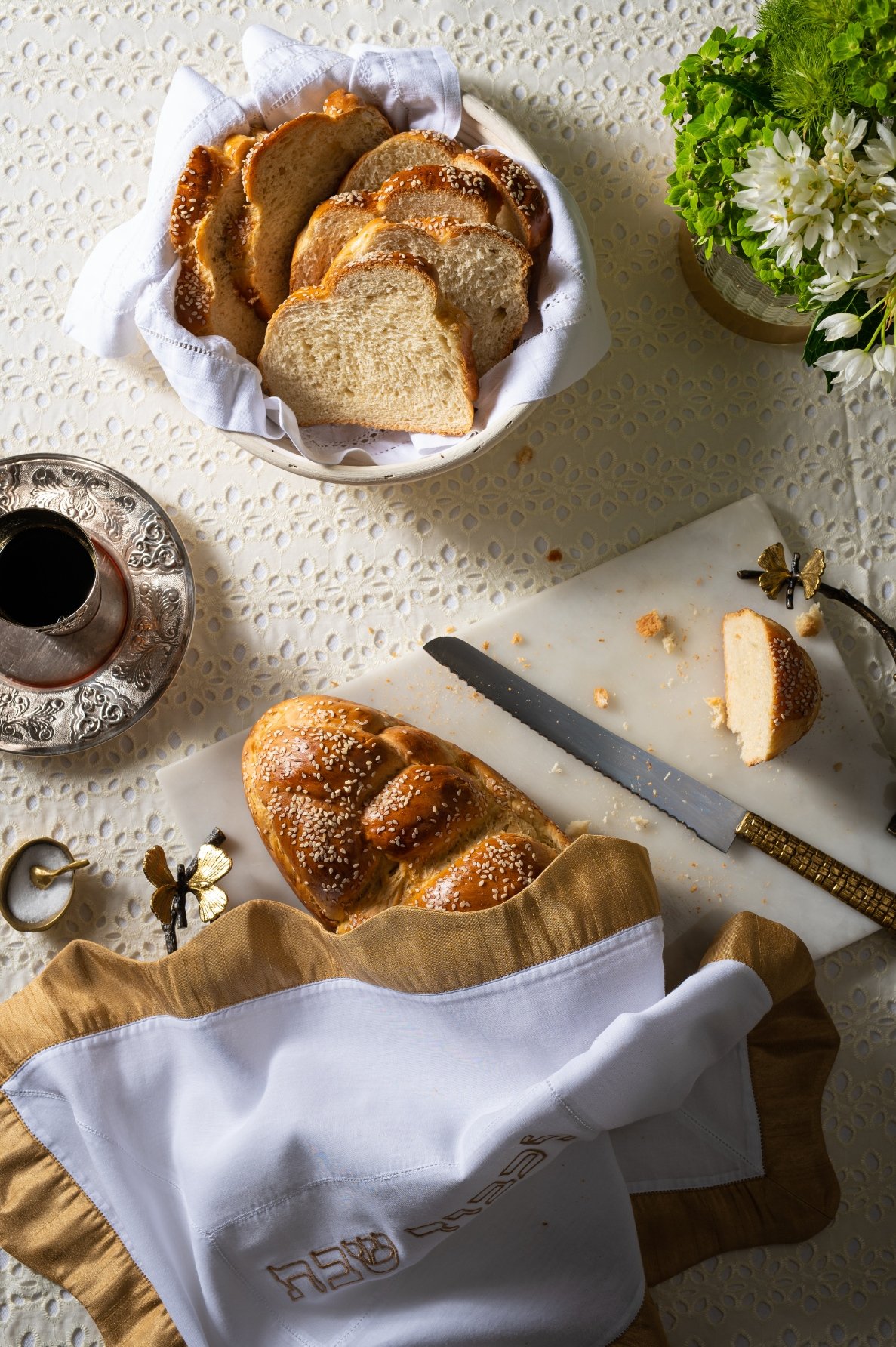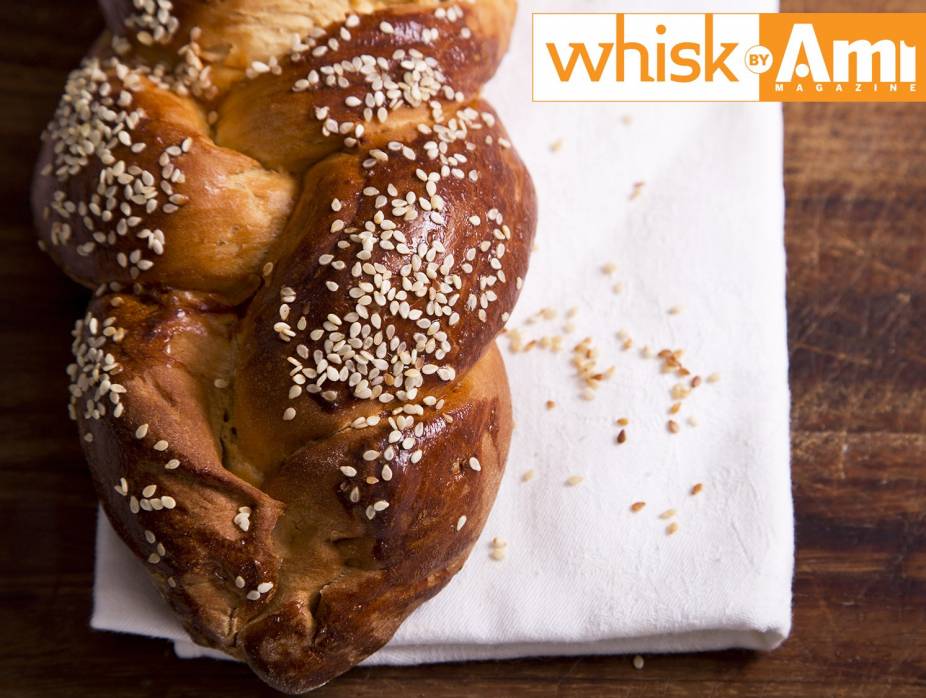1.
If you are doing this by hand, start with five cups of sifted flour in your work bowl. If you are doing this in a stand mixer, start with five and a half cups flour. Either way, whisk the flour with the sugar, salt, and yeast for 30 seconds to combine evenly.
2.
In another bowl, whisk the eggs. Whisk in the water and oil.
3.
If doing this by hand, stir the liquid ingredients into the dry ingredients with a wooden spoon. The dough will be a little sticky. Stir in more flour, about 1/4 cup at a time, until it is less sticky and hard to stir. Stir in just enough additional flour that the dough is too stiff to continue stirring by hand. Sprinkle 1/4 cup flour on your work surface. Turn the dough out onto the floured area. With the heels of your hands, knead in enough flour (adding more if needed so that the dough doesn’t stick to your hands but is still moist, about 10 minutes.
If doing this in a stand mixer, use the dough hook attachment. Begin by adding the liquid ingredients to the dry on low speed. As the dough comes together, add enough flour so that the dough does not stick to the sides of the bowl (it’s okay if it is a little sticky on the bottom). On medium-low speed, knead for about four minutes, or until the texture is a little soft and silky. The dough will still be a bit sticky but shouldn’t stick to your hands. I think it is always better to have a slightly soft, moist dough than a dry one, as it is more difficult to add liquid to a dry dough than it is to add flour to a moist one. I usually use six and a half to seven cups sifted flour (less if unsifted) in total (or more), but this varies, depending on the weather, the season, the eggs, and a million other things.
4.
Oil a large bowl with one tablespoon oil. Place the dough in the bowl and turn it over so it’s oiled on all sides. Cover the bowl with plastic wrap and then a clean tea towel. Let rise at room temperature until almost doubled in size, usually one and a half to two hours, depending on the temperature in the kitchen. Gently push (not punch) the dough down to release the air, and knead it again to form a ball.
5.
[Editor’s note: Hafrashat Challah may be taken at this point.] Only on special occasions do I use this amount of dough (about three and a half pounds) to make one really large challah. Usually, I cut the ball in half for two large challahs, or in thirds for three medium challahs (or two medium challahs and a tray of buns – you get the idea). Take the dough you will be using for one challah, and set aside the remainder, covered with plastic wrap. Divide the dough into three or four equally sized pieces (depending on whether you’re making a three-or four-braid challah). Cover with plastic wrap the pieces you’re not working with and, one at a time, press the piece of dough into an approximate rectangle shape using your fingertips. Then roll the rectangle up tightly into a small cylinder or log, and press the lengthwise edge to seal it. Next, taking both hands, roll the dough from the center to the outside edge into a rope. If at any point the dough does not want to extend, just set it aside from a few minutes and then try again. Repeat for the other pieces and cover the ropes while they wait to be braided. This rolling technique is another technique I learned from Uri. If you’re used to shaping the dough into small balls and rolling it into ropes, do it that way.
6.
Braid as you like with either three or four strands. (The easiest way to learn to do this is to see it in action. I’ve created videos on my Instagram page and website for just this purpose!) Place the challahs on baking sheets lined with Gefen Parchment Paper, with enough space for them to rise and bake. Cover loosely with plastic wrap and let rise for 30 to 60 minutes or until almost doubled in size. Small challahs or buns will rise faster.
7.
Halfway through the second rise, preheat the oven to 350 degrees Fahrenheit. For the egg wash, mix the egg with the water and salt. Brush the challah gently with the egg wash just before baking. If you want a darker glaze, wait 10 minutes and glaze a second time. Sprinkle with seeds or salt or nothing. Bake for 25 to 30 minutes or longer. (Small breads or buns will bake faster. Big breads will take longer). Check the bread after 20 minutes, and it is browning too much, reduce the oven temperature to 325 degrees Fahrenheit and cover the bread lightly with aluminum foil. Bake until an instant-read thermometer registers between 185 degrees Fahrenheit and 195 degrees Fahrenheit when inserted into the center of the bread. Transfer the bread to a wire rack to cool.


















Reviews